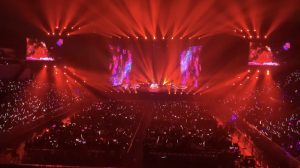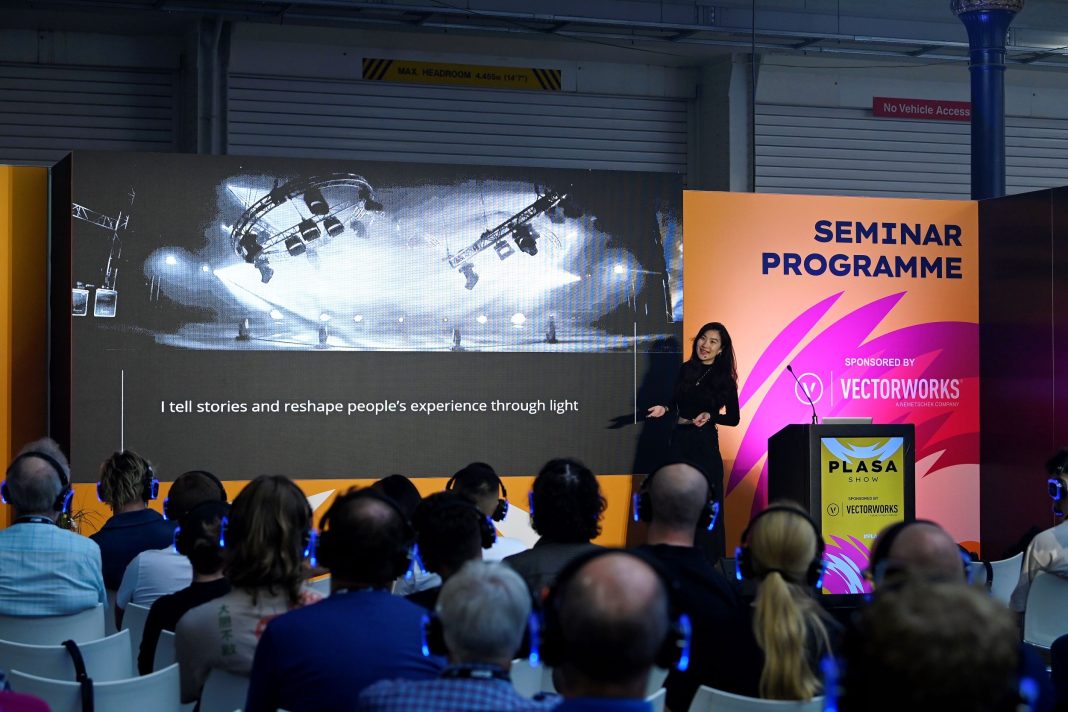Daphne Ting-Yu Chu, a London-based Taiwanese Lighting Designer, made a significant impact at the PLASA Show 2023 in London with her enlightening discussion on the creative process underlying her narrative-driven approach to lighting design. Specialising in concert lighting design and interactive installations, she boasts a global portfolio spanning over 50 cities and contributions to more than 200 arena-scale productions. Beyond the stage, her interactive installations have graced international exhibitions, emphasising the use of lighting to tell stories, enhance viewer experiences, and forge connections with audiences. Notably, she collaborated with Lighting Designer, Cheng Wei Lee on Angela Zhang’s Fabel World Tour, captivating 22 cities, and continuing its journey into 2024.
How did you transition from concert lighting design to interactive lighting installations?
“Concert lighting design and interactive lighting installations give me different kinds of excitement. Concert lighting design allowed me to explore the synergy between light and music, and I noticed the profound impact lighting had on the audience’s emotional connection to the performance. This realisation sparked my curiosity about how I could take this interaction further. Interactive installations became the ideal medium for this exploration, enabling me to create immersive experiences where the audience actively participates in shaping the narrative. For example, one of my projects, AfterGlow. It explores our space perception in tangible physical space and intangible perceived space. By fusing lighting, sound art, and interactive technology, I created an ever-shifting sensory space perception that responded to the audience in real-time. This reshaping of the audience’s experience empowers them to become co-creators of the narrative, blurring the lines between art and technology. I aim to make the experience not just visually engaging but participatory and emotionally resonant.”
What does a narrative-driven approach to lighting design entail in the context of concerts?
“My approach to lighting design is rooted in the idea that light should be dynamic and responsive, engaging the audience in a sensory journey. I believe that light should do more than just illuminate; it should evoke emotions and engage the audience on a sensory level. For my concert lighting design, I focus on sound visualisation and narrative visualisation to create an immersive journey for each viewer. For interactive installations, I carefully choreograph light to respond to the audience’s behaviour and emotions and make lights an active and dynamic element in storytelling to turn viewers from passive spectators to active participants in the unfolding narratives.”

How do you integrate sound and narrative visualisation into your concert lighting designs?
“People come to the concert not for a lighting show, but for the music. So, I see sound visualisation as the most important part of concert lighting design. Different types of lights have different textures; they can be sharp, hazy, soft, and grainy, and sounds also have different textures and qualities. I like to play with the texture of lights to enrich the nuances of the music and deliver the dynamic of the song. In terms of narrative visualisation, we all have this kind of experience that when we are depressed, we listen to a song repeatedly and feel this song is totally talking about us. Therefore, I try to visualise the story of the song and emphasise the part that makes audiences feel relatable. This connection can be hidden in lyrics, music videos or even in the mood of the melody. By exploring the interplay between light, sound, and narratives, I aim to allow audiences to connect with the performance on a deeper level, making the show experience a special memory.”
How do you envision the future of lighting design, particularly its role in storytelling?
“I see the future of lighting design as a boundless frontier where technology and art converge to create transformative experiences. Lighting has the potential to redefine how we connect with stories, each other, and the world around us. As technology evolves, so will the possibilities for storytelling through light. I’m excited to be part of this journey, where illumination transcends its conventional role to become a profound vehicle for connection and expression.”
Daphne Ting-Yu Chu’s transition from concert lighting to interactive installations exemplifies her innovative approach to lighting. Her narrative-driven lighting blurs the line between spectators and participants, placing emphasis on texture and storytelling. She involves audiences as co-creators through lighting, sound, and technology, continually pushing the boundaries of the field.
For more information, visit her website: www.daphnechudesgin.com






